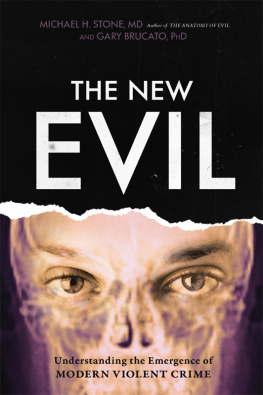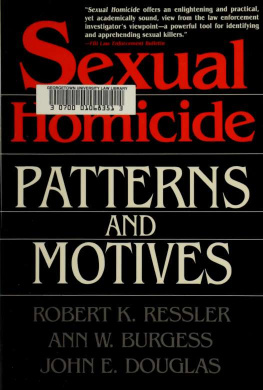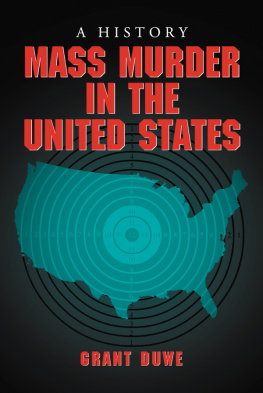Elizabeth A. Gurian - Serial and Mass Murder: Understanding Multicide through Offending Patterns, Explanations, and Outcomes
Here you can read online Elizabeth A. Gurian - Serial and Mass Murder: Understanding Multicide through Offending Patterns, Explanations, and Outcomes full text of the book (entire story) in english for free. Download pdf and epub, get meaning, cover and reviews about this ebook. year: 2021, publisher: Routledge, genre: Home and family. Description of the work, (preface) as well as reviews are available. Best literature library LitArk.com created for fans of good reading and offers a wide selection of genres:
Romance novel
Science fiction
Adventure
Detective
Science
History
Home and family
Prose
Art
Politics
Computer
Non-fiction
Religion
Business
Children
Humor
Choose a favorite category and find really read worthwhile books. Enjoy immersion in the world of imagination, feel the emotions of the characters or learn something new for yourself, make an fascinating discovery.

- Book:Serial and Mass Murder: Understanding Multicide through Offending Patterns, Explanations, and Outcomes
- Author:
- Publisher:Routledge
- Genre:
- Year:2021
- Rating:4 / 5
- Favourites:Add to favourites
- Your mark:
Serial and Mass Murder: Understanding Multicide through Offending Patterns, Explanations, and Outcomes: summary, description and annotation
We offer to read an annotation, description, summary or preface (depends on what the author of the book "Serial and Mass Murder: Understanding Multicide through Offending Patterns, Explanations, and Outcomes" wrote himself). If you haven't found the necessary information about the book — write in the comments, we will try to find it.
This book reframes the study of multicide (that is, serial and mass murder) to use objective measures, and aims to expand our understanding of multicide offending through descriptive and inferential statistical analyses of different homicide patterns of the offenders. Criminal homicide and multiple murders are rare occurrences that typically account for a very small percentage of all violent crimes in most countries. Despite this low occurrence, homicide continues to be an area of intense study, with a focus on subjective measures and classifications. The research and analysis based on a database of over 1,300 cases contributes to the criminological study of violence and draws distinctions between the types of offenders (partnered and solo, serial and mass, male and female, etc.) from a range of different countries and across decades.
Traditionally, studies of homicide focus on male offenders and theories of offending are then applied to females and co-offenders. The research presented in this book reveals that women and partnered offenders have very different homicide patterns from men. Looking at the history of multicide offending, this book uses descriptive and inferential statistical analyses to directly compare differences in offending and outcome patterns across multicide offender types.
This exploration of the multidimensionality of homicide at an international level is useful for scholars and students interested in criminal justice, criminology, psychology, sociology, or law.
Elizabeth A. Gurian: author's other books
Who wrote Serial and Mass Murder: Understanding Multicide through Offending Patterns, Explanations, and Outcomes? Find out the surname, the name of the author of the book and a list of all author's works by series.








